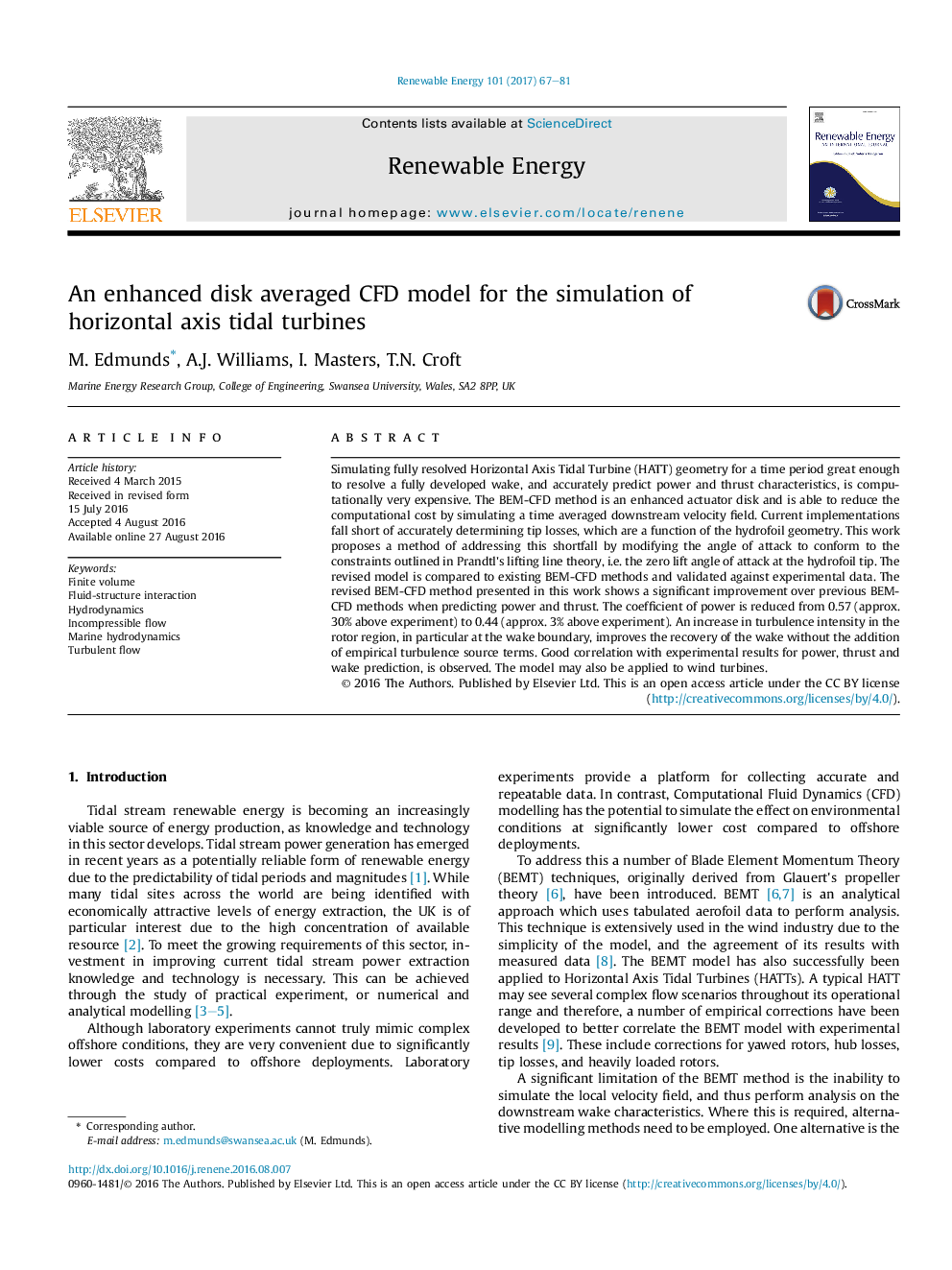| کد مقاله | کد نشریه | سال انتشار | مقاله انگلیسی | نسخه تمام متن |
|---|---|---|---|---|
| 4926863 | 1431602 | 2017 | 15 صفحه PDF | دانلود رایگان |

- Presented is a new hydrofoil tip loss correction technique.
- The technique improves the accuracy of horizontal axis tidal turbine prediction.
- This method is validated against experimental flume data.
- The work compares and contrasts with industry standard techniques.
Simulating fully resolved Horizontal Axis Tidal Turbine (HATT) geometry for a time period great enough to resolve a fully developed wake, and accurately predict power and thrust characteristics, is computationally very expensive. The BEM-CFD method is an enhanced actuator disk and is able to reduce the computational cost by simulating a time averaged downstream velocity field. Current implementations fall short of accurately determining tip losses, which are a function of the hydrofoil geometry. This work proposes a method of addressing this shortfall by modifying the angle of attack to conform to the constraints outlined in Prandtl's lifting line theory, i.e. the zero lift angle of attack at the hydrofoil tip. The revised model is compared to existing BEM-CFD methods and validated against experimental data. The revised BEM-CFD method presented in this work shows a significant improvement over previous BEM-CFD methods when predicting power and thrust. The coefficient of power is reduced from 0.57 (approx. 30% above experiment) to 0.44 (approx. 3% above experiment). An increase in turbulence intensity in the rotor region, in particular at the wake boundary, improves the recovery of the wake without the addition of empirical turbulence source terms. Good correlation with experimental results for power, thrust and wake prediction, is observed. The model may also be applied to wind turbines.
Journal: Renewable Energy - Volume 101, February 2017, Pages 67-81